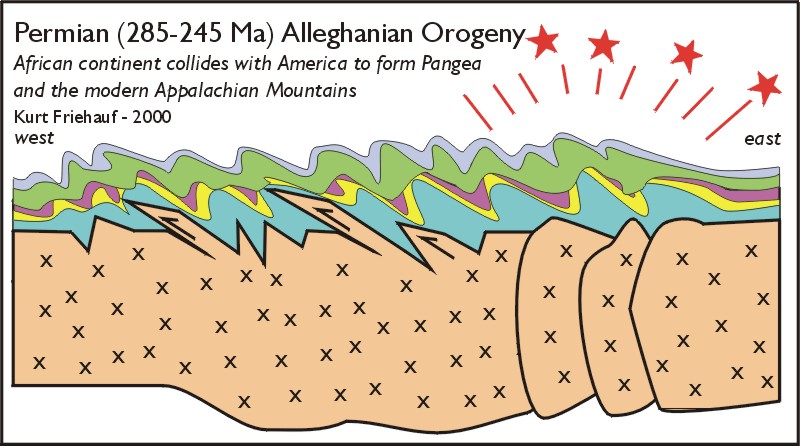Brief outline of Pennsylvania’s Geologic History
Kurt Friehauf
285-245 million years ago – Permian Alleghenian Orogeny
When worlds collide, new worlds form. The Alleghenian Orogeny resulted from the collision of the African/Eurasian continent with North America. The modern Appalachian Mountains were born of this massive wreck. Because the continents stuck together, a new supercontinent was formed called Pangea. The world had only one gigantic continent surrounded by a single giant ocean. (Christopher Columbus was just a few hundred million years late, eh?)
The collision forced sea floor sediments up onto the continent like a gargantuan bulldozer. The sedimentary rocks were folded like a paper jam in a computer printer, rumpling into a myriad of crinkles. Thrust faults sliced the Earth, sliding huge slabs of rock up over others.
The Permian was also a period known for an incredible mass extinction – much bigger than the more recent one that wiped out the dinosaurs. The causes of this mass extinction are controversial. We know that there are widespread deposits of rocks characteristic of glaciers, suggesting an ice age at about that time, but ice ages themselves generally do not cause mass extinctions. Perhaps it was a meteorite impact, or maybe massive volcanic activity spewing ash into the sky that blocked the sun, or maybe something else entirely. Whatever the cause of the extinction, just as the Phoenix arose from the ashes, so life rebounded from this nearly mortal blow – a new life for a new world – the world of the dinosaurs.
